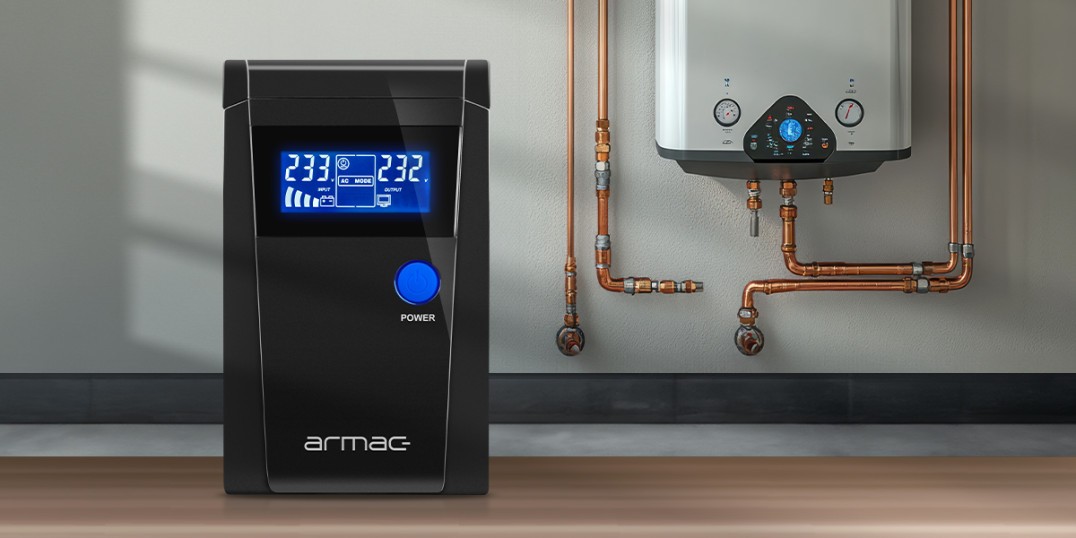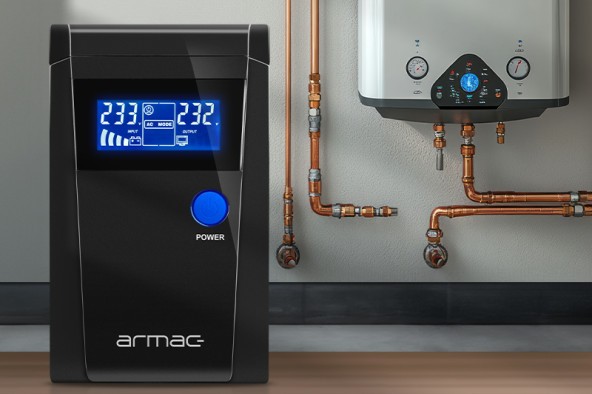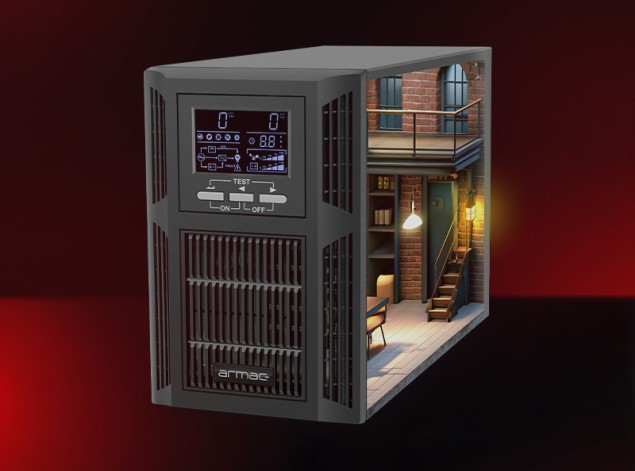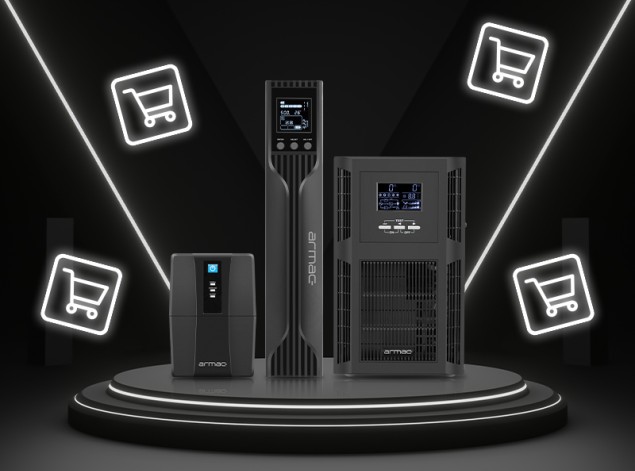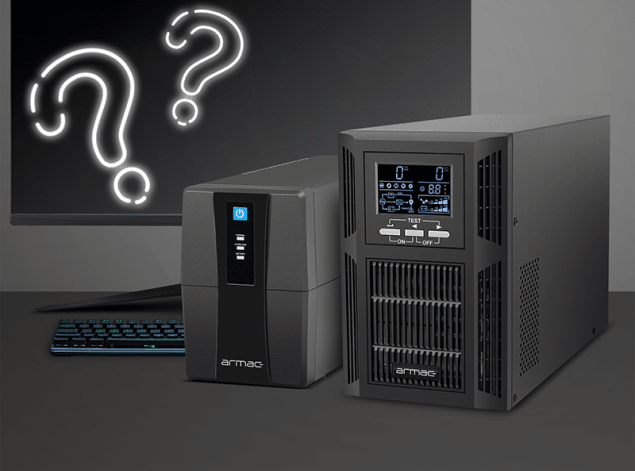Choosing the best UPS for your central heating system is an important step in ensuring uninterrupted operation of the central heating system. First, check how much electricity your furnace consumes and whether its power consumption, including the pump, is within the range that the adapter can sustain in the event of a power failure. With the right device, you can avoid power outages and heating problems, especially during the months when the demand for heat is highest.
An emergency furnace adapter ensures a reliable power supply, allowing the central heating, gas or solid fuel furnace to operate even in the event of a power failure. In practice, this means that the circulation pump and boiler controllers will not shut down, which is crucial for the safety of the boiler room and thermal comfort. Regardless of whether we are dealing with a gas stove, a fireplace with a water jacket or a coal stove, a well-chosen uninterruptible power supply will eliminate the risk of the installation cooling down or dangerous temperature spikes.
In this article, you will learn how to choose the best uninterruptible power supply (e.g. a UPS for a furnace), what parameters to pay attention to and how to connect the adapter to ensure long and trouble-free operation of your heating system.
What are the best uninterruptible power supplies for a gas furnace?
Armac adapters from the on-line and line-interactive series, as well as other similar devices from other manufacturers (e.g. line-interactive inverters), are becoming increasingly popular as emergency power supplies for gas stoves. When choosing an emergency power adapter, it is important to pay attention to the type of UPS and the specifications regarding the output power and the time it can sustain the operation of the furnace.
What should you look out for when choosing an uninterruptible power supply?
The first and most important requirement is that the power supply provides a full sine wave. Heating components such as control systems and motors are sensitive to even small voltage fluctuations. To avoid damage, the UPS should supply power that is as close as possible to the power from a functioning power grid. Full sine wave UPSs are the only sensible choice in this case – this is the first and most important feature to look out for.
In addition, the emergency power adapter should have sufficient power, adequate backup time and an optimally built-in voltage stabilizer (AVR) so that the gas furnace is not damaged in the event of a power failure. Furthermore, it is worth noting that the device is easy, simple and intuitive to use - especially if you install it in a boiler room, where operating conditions can be more difficult than in office spaces.
What parameters should a UPS adapter have?
Each UPS adapter for a gas furnace should have a power (i.e. a parameter that determines the load that an adapter of power X can accept) adjusted to the power consumption of the furnace and other devices connected to it. A good emergency power adapter for a gas furnace is characterized by:
- Full sine wave on the output sockets - this is safe for the motors of pumps and boiler controllers.
- Stabilization of the output voltage (AVR).
- The ability to keep the furnace running for a sufficiently long time (backup time).
- Adequate capacity and quality of the AGM battery or other type.
Why is an uninterruptible power supply crucial for a gas heater?
An uninterruptible power supply for a gas heater protects the installation from uncontrolled shutdown, which can lead to damage to the heating elements and even pose a risk if the water in the system overheats. In addition, in the event of a prolonged power outage, a UPS adapter for the furnace prevents the house from cooling down completely and ensures that the heating system continues to work – especially in winter.
How do I connect the UPS adapter to the heating pump?
The emergency power adapter (e.g. UPS for the stove) can simultaneously operate both the stove itself and the heating pump (if the specifications allow it). However, you need to know how to connect it correctly and what the installation requirements are.
Step by step: connecting the adapter to the heating system
- First assess the parameters: Before you start installing, the adapter should have enough power to cover the total power consumption of the stove and the pump (the so-called power consumption).
- Switch off the mains power: Safety first!
- Connect the adapter: Connect the emergency power supply to the gas or solid fuel stove and to the pump, according to the manufacturer's instructions.
- Check the built-in battery: Make sure the battery is charged (it is often charged automatically during standard operation of the adapter).
- Start the system: Once the mains power is on and you have made sure that everything is working properly, you have a backup power supply in case of a power failure.
What are the requirements for an emergency power supply?
The emergency power supply must be stable and have a backup time that is adapted to the needs of the heating system. It is worth considering that in the event of a power failure, it is not always known how long the power outage will last. Therefore, if a gas stove or a fireplace with a water jacket consumes a lot of electricity, the uninterruptible power supply should be equipped with a battery of the appropriate class and provide sufficient output from the battery. It is also important to remember that it is possible to switch from the mains to the battery quickly enough that the stove or pump does not have time to turn off.
What types of UPS adapters are available on the market?
There are various types of UPS adapters available on the market, from simple, lower-power models to advanced adapters with a built-in battery and an extensive charge management system.
Differences between UPS adapters for gas stoves and others
The main difference is that adapters for gas stoves often require a full sinusoidal wave to work with the pump motor without generating unwanted interference. On the other hand, simpler line-interactive UPSs are often sufficient for computers or office equipment. Hence, it is important that the type of UPS is matched to the load characteristics.
What are the advantages of a UPS with an integrated inverter?
A UPS with an integrated sine wave inverter ensures:
- Reliable switching between mains power and battery power,
- No output voltage drops,
- Longer service life of heating devices thanks to mains voltage stabilization. In addition, an AVR mains voltage corrector can be built into it, which is designed to stabilize the output voltage.
What should I consider when choosing a 300W or 500W adapter?
Each 300W or 500W adapter should be selected according to the output power required by the furnace and pump. It is also worth checking that there is not too much current in relation to the battery capacity, because a large discharge current shortens the battery life. In the case of higher consumption, it is better to use a more powerful UPS, e.g. 600W or 800W, so that the power supply to the stove is fully stable.
What parameters should a good UPS have?
The right choice of parameters is crucial for ensuring trouble-free operation of the heating system.
Full sine wave
A full (or pure) sine wave is a perfectly smooth current waveform that corresponds in character to the mains voltage. This type of signal is generated by high-quality UPS adapters, providing a stable and safe power supply even for the most sensitive devices, such as servers or advanced audio systems. Thanks to this, the risk of damage is minimal, and the equipment can work optimally even in situations where it is necessary to switch to emergency power.
What is the significance of the autonomy time and how is it calculated?
The autonomy time is the period of time during which the emergency power adapter is able to keep the furnace running after a power failure. To calculate the autonomy time, you need to know the power consumption of the furnace and the capacity of the battery. It is important that the battery is never subjected to a current that is too high for its capacity, as this can shorten its service life.
Why is a voltage stabilizer important?
A voltage stabilizer (AVR) is extremely important for protecting devices from fluctuations in the mains voltage. Thanks to it, the emergency adapter maintains the correct output voltage even when faced with drops or spikes in the mains power supply. It works as a kind of AVR mains voltage corrector - it minimizes the risk of damage to the electronic systems in the furnace.
How does it affect the operation of the AGM battery?
AGM batteries are considered to be one of the best for UPS applications because they combine safety, low maintenance and stable operation. Proper charging of the AGM battery is crucial for its lifespan, and a UPS adapter equipped with a good charger can automatically manage the charging process so that the battery is always ready for use.
How does an emergency power supply affect the safety of the heating system?
A reliable backup power supply is one of the pillars of heating system safety - especially in winter, when a power failure can be accompanied by the risk of the system freezing.
Impact of a power failure on the operation of the furnace
In the event of a power failure, the central heating boiler and the pump will stop working. This can lead to rapid temperature changes and even damage to the boiler or fireplace. An emergency power adapter for the boiler effectively maintains its operation until the mains power is restored.
How can an emergency power system prevent damage?
The emergency power supply system not only ensures that the furnace continues to operate, but also protects it from too low or too high a voltage. This prevents irreversible damage that can occur during sudden voltage surges or drops. The built-in converter and toroidal transformer in many UPS models allow for a high-quality output power.
Using inverters to protect heating devices
In addition to uninterruptible power supplies, it is worth considering using inverters, which are an optimal solution especially for central heating boilers and gas boilers. Inverters ensure high efficiency, a clean sinusoidal waveform and greater flexibility in battery selection. Although a UPS (especially one with a large battery capacity) is also perfect for this role, the use of inverters will become increasingly popular in the future. Amarc is planning to include these solutions in its portfolio, so keep an eye on our website for updates.
Where can I buy Armac products?
If you are wondering where to buy a UPS adapter, please visit our subpage with a list of retailers and distributors. You will find a division into individual and business customers, which will make it easier to match the offer to your needs and allow you to choose the best emergency power adapter for the furnace - one that will ensure a long backup time, voltage stabilizer and trouble-free operation of your heating system.
With the right choice and correct installation, the UPS adapter for the central heating furnace guarantees safety, thermal comfort and peace of mind in the event of a power failure. Remember that buying a UPS adapter is an investment in the reliability and safety of your home or office heating.
